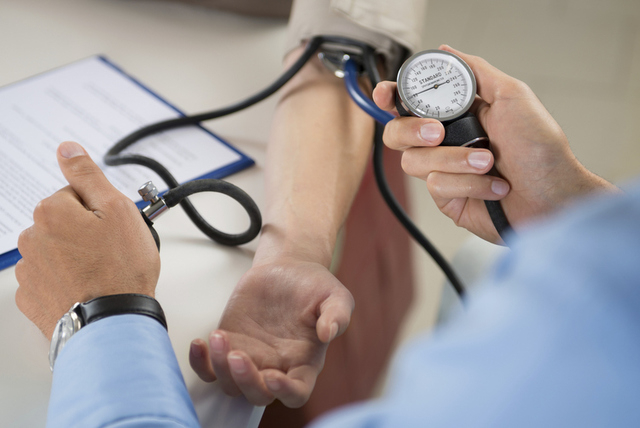Make sure your blood-pressure monitor measures up
Your blood pressure is creeping up a bit, so you’re finally taking your doctor’s advice and shopping for a home blood-pressure monitor.
What should you look for? First, avoid a fingertip or wrist-cuff machine. Instead, Alona Angosta, a family nurse practitioner and assistant professor at the University of Nevada, Las Vegas’ School of Nursing, recommends getting an arm-cuff machine, which offers better accuracy.
Then, look for an automatic monitor with an easy-to-read digital readout. With an automatic monitor, taking a measurement requires simply wrapping a cuff around the upper arm, pressing a button and waiting as the machine inflates the cuff, takes the measurement, deflates the cuff and displays the measurement.
But make sure the cuff wraps easily around your arm.
“If it’s too big or too small, it’s not going to give them an accurate reading,” Angosta says.
Also consider the monitor’s cost.
“Many of them are expensive and can range from $50 to over $100 and sometimes over $200,” Angosta says.
By the way: Angosta advises checking with your health care insurance provider first to see which monitors, and what features, will and won’t be covered.
Also, she says, be sure the monitor you choose is FDA-approved. The American Heart Association suggests checking websites such as that of the Dabl Educational Trust — www.dableducational.org — which offers comparisons and ratings of specific models.
Once you’ve chosen a machine, read the instruction book and take the monitor with you on your next visit to your doctor or health care provider. Your health care provider will compare the readings of your machine to the readings on his or her machine and offer advice about how to properly calibrate your home monitor.
Then, Angosta says, make it a point to take your monitor back at least once or twice a year to keep it accurate.
Also, ask your doctor, nurse or health care provider for advice about how to take readings properly.
“We recommend that blood pressure should be taken in the morning at the same time each day and before exercising,” Angosta says.
After waking up, and before measuring, sit quietly for five minutes. Then apply the cuff to bare skin, not over clothing, and position your arm — “we prefer the left arm,” Angosta says — on a table at the level of your heart.
Take the first reading, wait five minutes and take another reading. Then take “an average of the two,” Angosta says.
Log your daily readings and take them with you on your next doctor’s visit. That way, your daily readings can help your doctor or health care provider see how you’re doing between checkups and, more importantly, offer more effective ways of keeping your blood pressure in check.




























